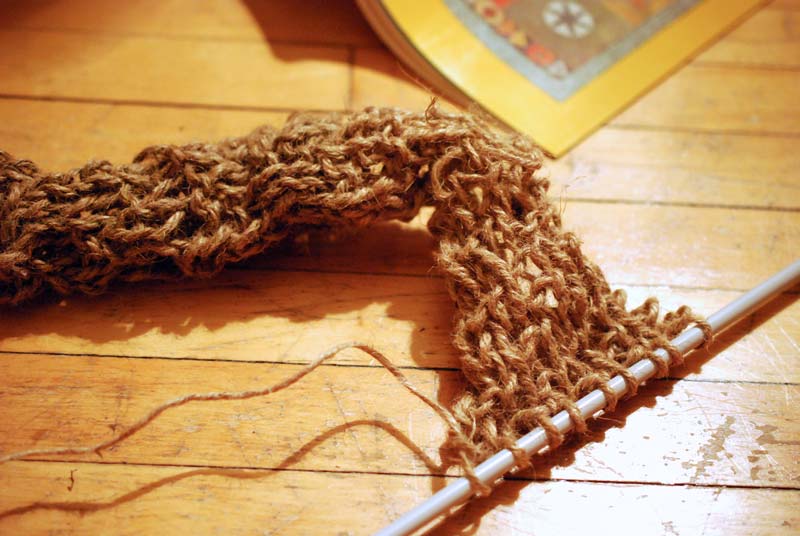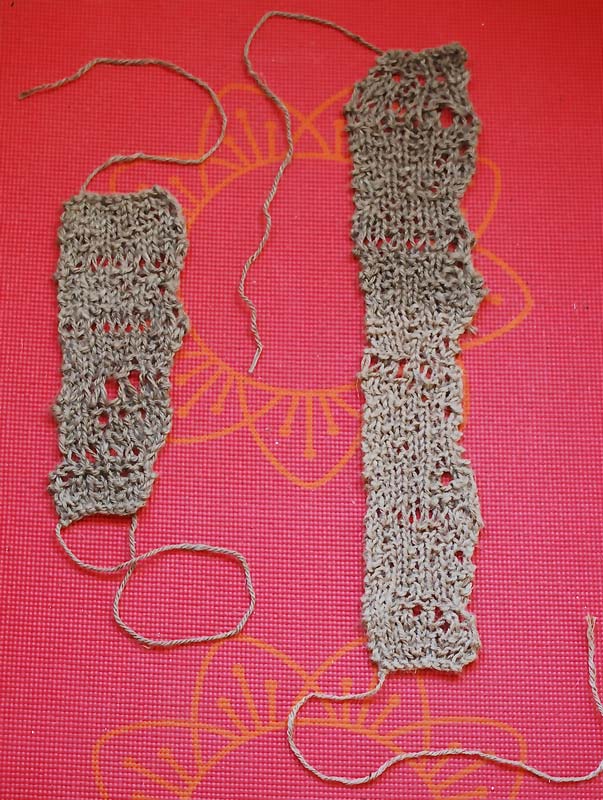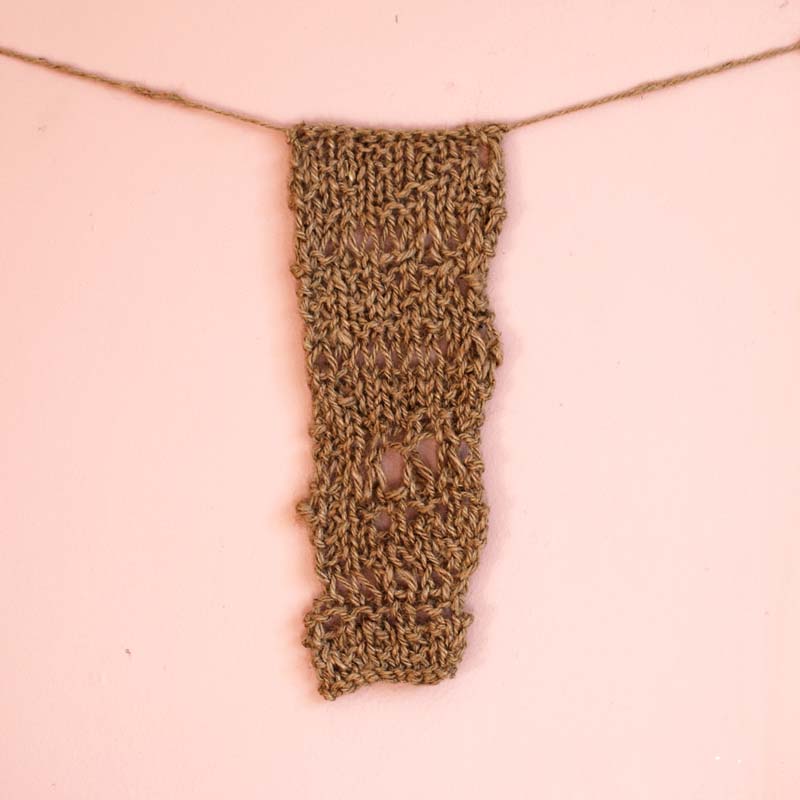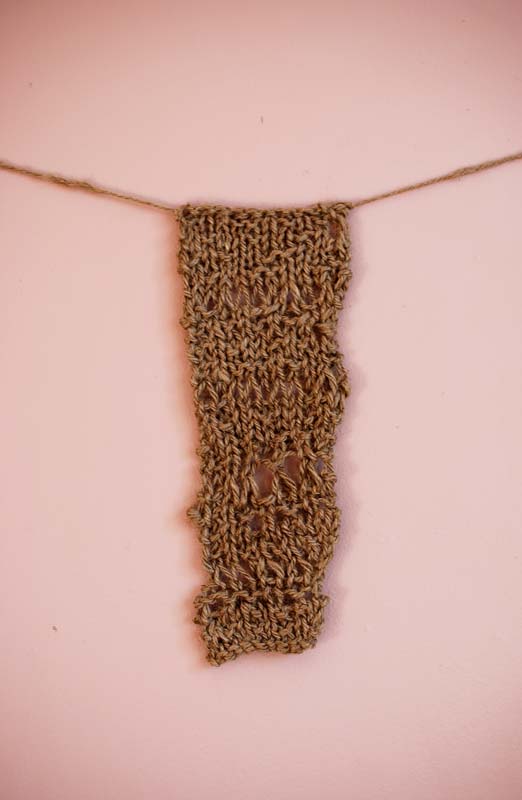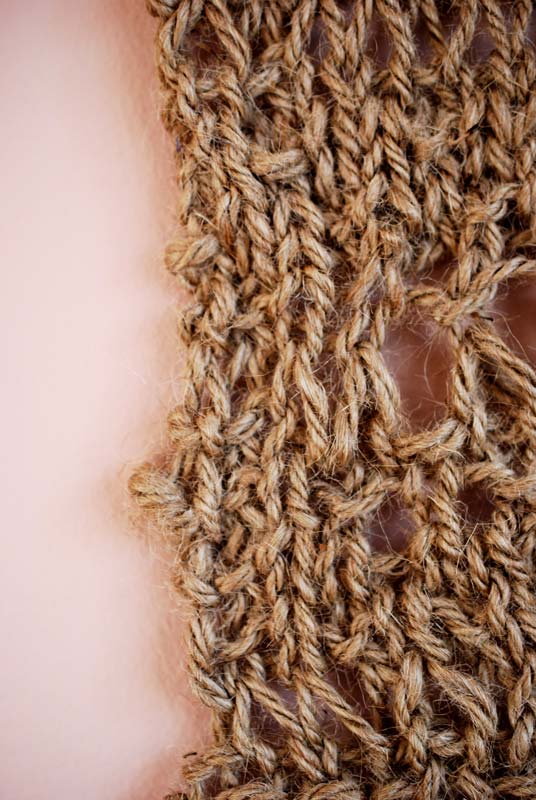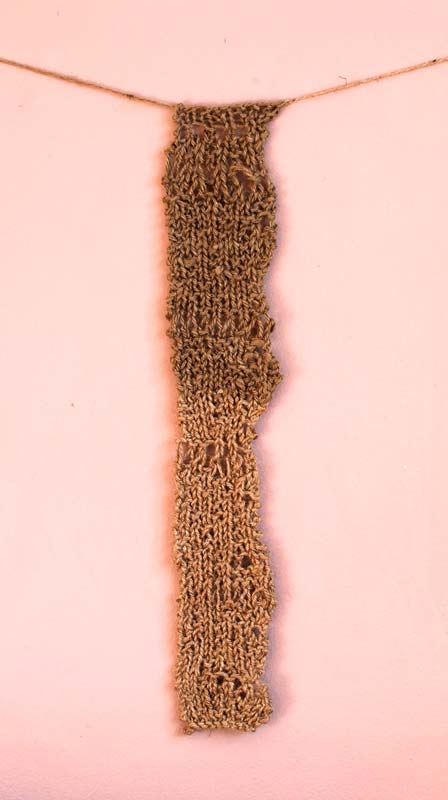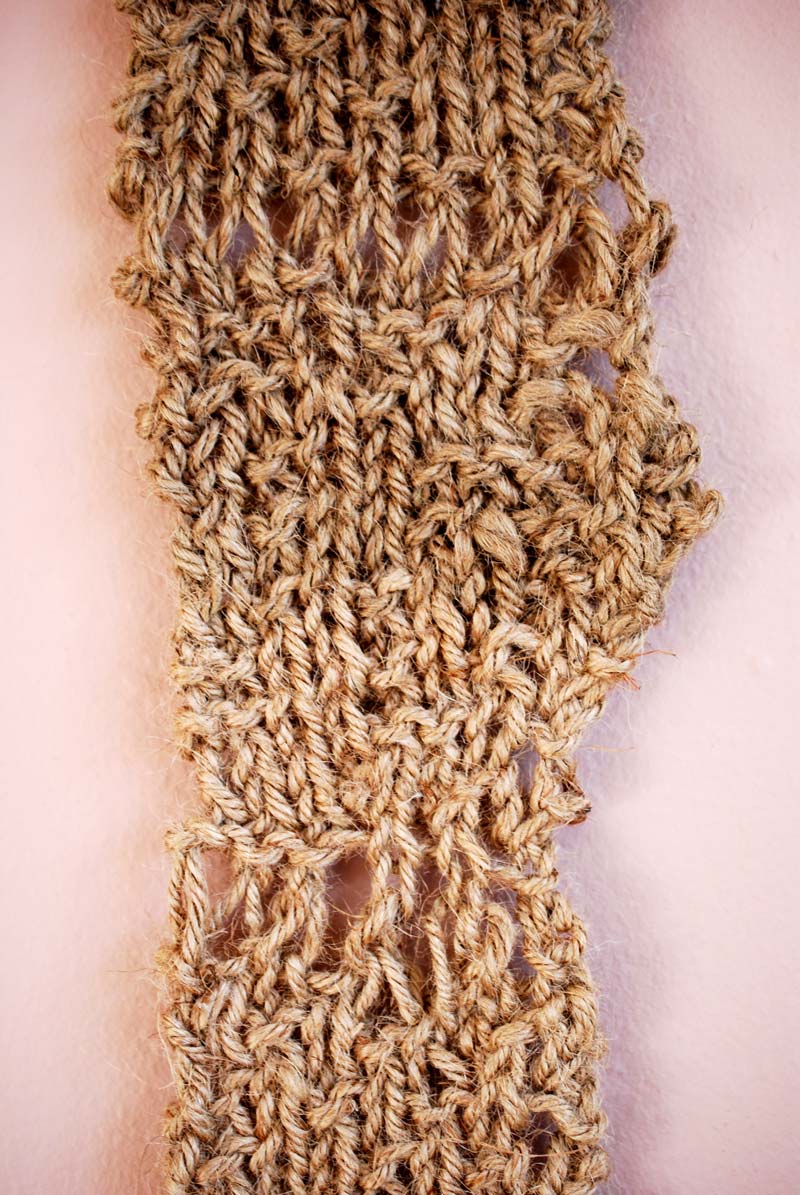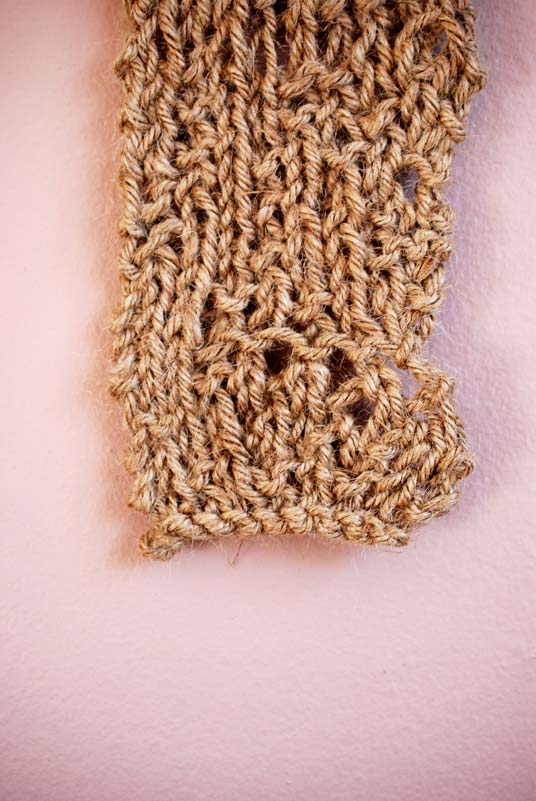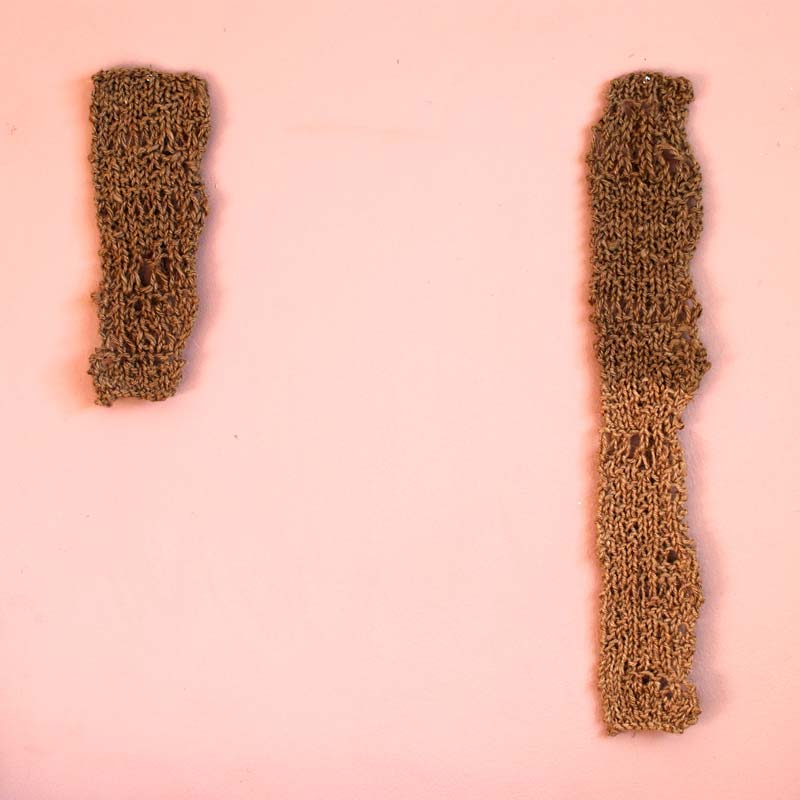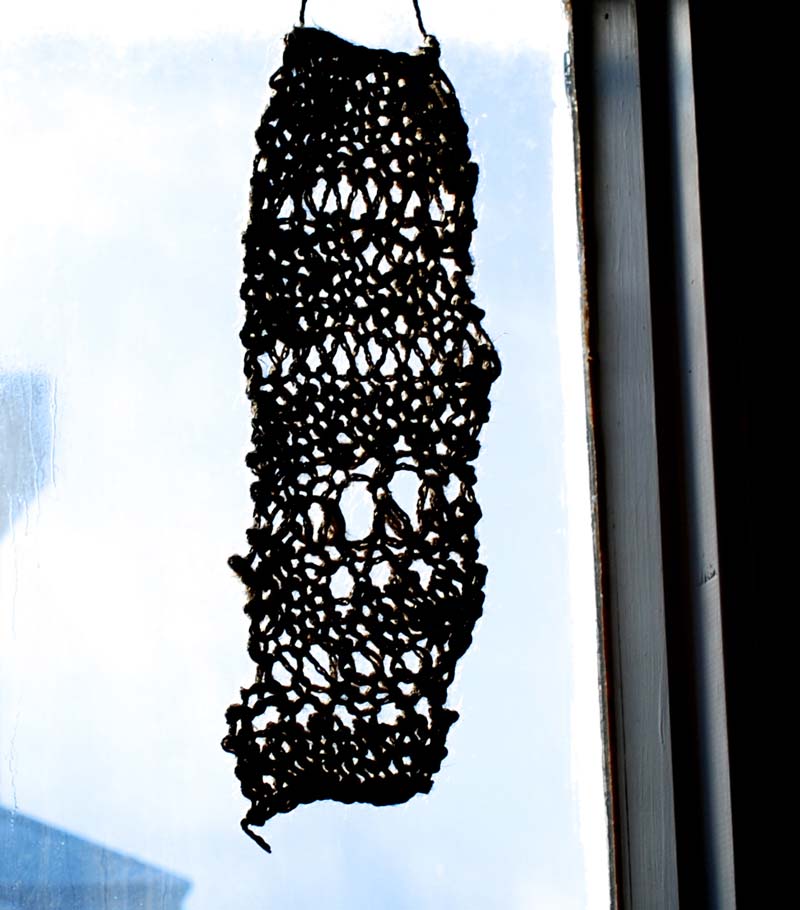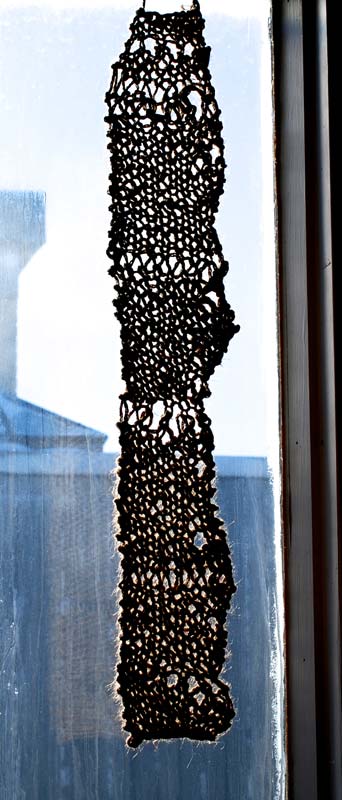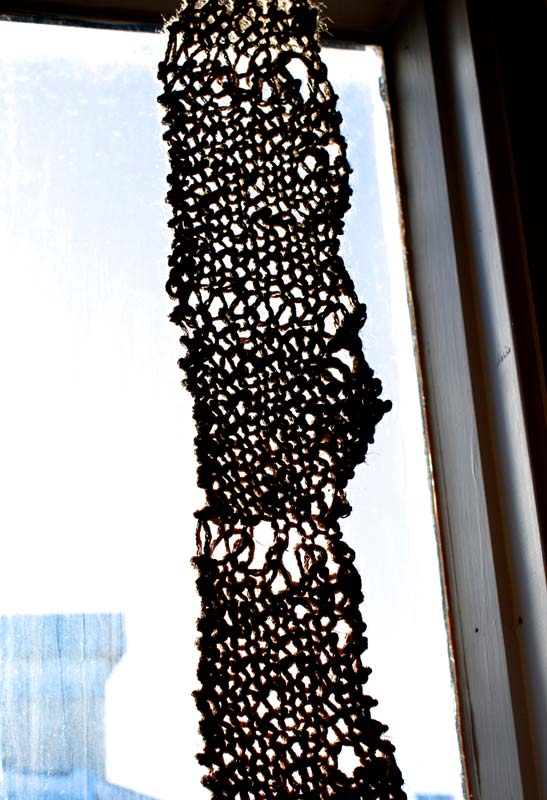[scroll left to right]
Home crafts such as embroidery, knitting, weaving, and other textile arts have historically been downgraded to the realm of “craft” or “women’s work.” Women traditionally pass down these skills from one generation to the next, and in so doing, they build a history and a language through time. A poem, just as any other work of craft, can be deciphered and interpreted, taught and learned, picked apart to its base materials and reinvented as something entirely new without ever fully shedding its ties to the past.
The two tapestries which currently constitute k2tog are my knitted translations of the poems ‘Sandpiper’ by Elizabeth Bishop and ‘Poor Bird’ by P.K. Page. As a glosa, Page’s poem directly contains and expands upon Bishop’s words, just as my ‘poems’ contain and reinvent each woman’s language. I constructed knitting patterns for the tapestries by scanning each poem and assigning knit and purl stitches to stressed and unstressed beats, and by mapping the number of beats in each line. Each line of verse is a knitted row and each beat, a stitch. Quite literally, the poems can be read—if you understand the language.
In weaving together these two traditionally disparate forms of language, the tactility of the words began to reveal themselves, the syntax of the pattern. The twine felt coarse and binding as I knit. I observed the gestures towards a beautiful piece of cloth when the rhythm of the original poem became metered, the holes which unavoidably formed when the number of beats reduced from line to line. As the tapestries formed, I became aware of the physical passage of time as it manifested in the fabric. Just as the structure of language forces one to read a poem through, word by word, line by line, I was bound to the linear chronological structure through which I wove the words. It became quickly apparent that the act of weaving was as much a part of the artwork as the tapestries it produced.
As I knit, I became aware of my privileged place of understanding, the dual histories to which I belong. k2tog inhabits the traditions of both “women’s crafts” and “fine arts”, the artisan and the artist, blurring distinctions between the concepts of reproduction and creativity. In being forced to operate within each structure, each history which has traditionally devalued women’s work, I discovered the potential of each language to expand and inform the other, creating renewed meaning from oppressive traditions. As Colette says of her daughter’s stitching in Earthly Paradise, “she is silent when she sews, silent for hours on end…she is silent, and she – why not write it down the word that frightens me – she is thinking.”
